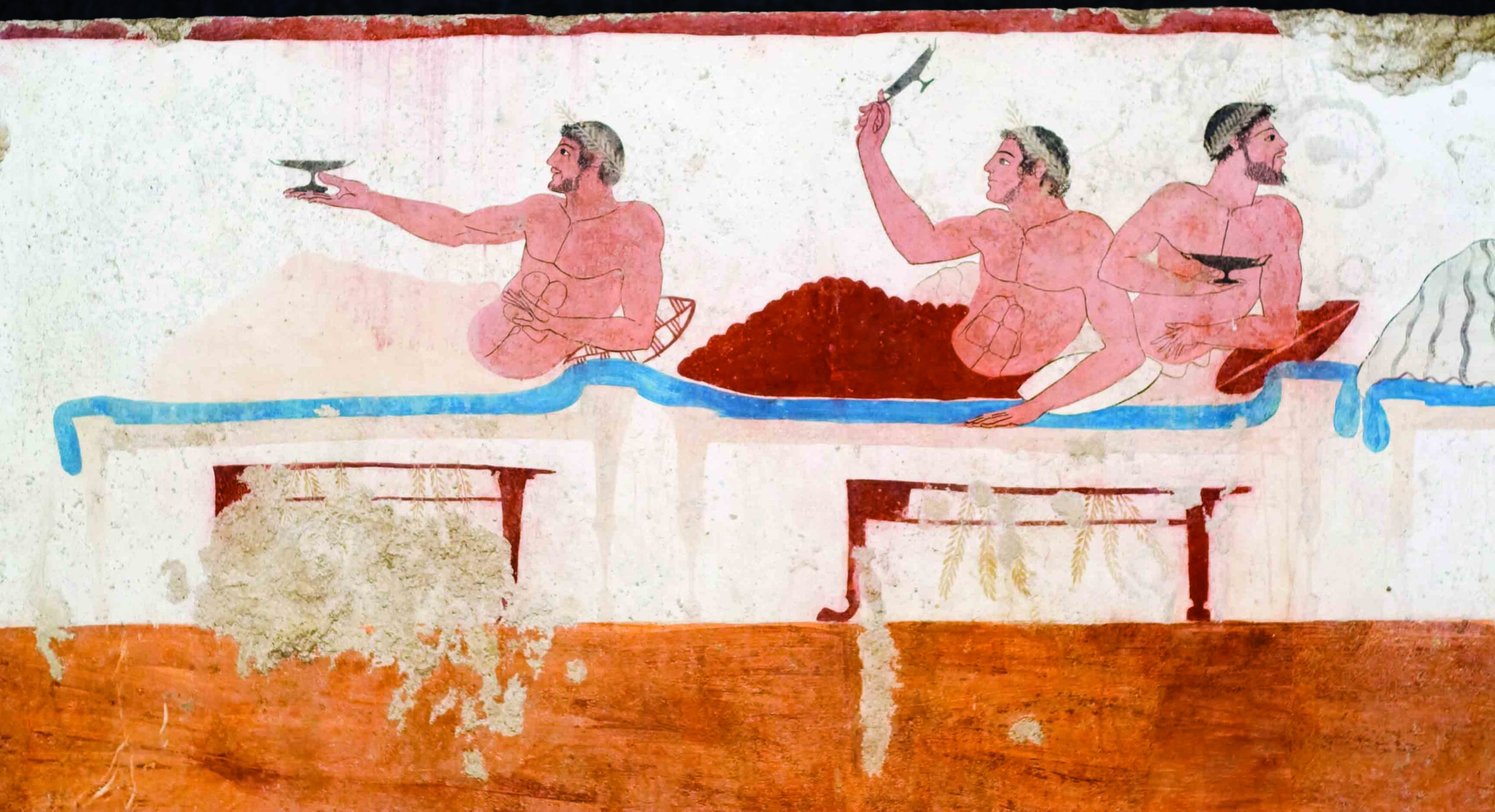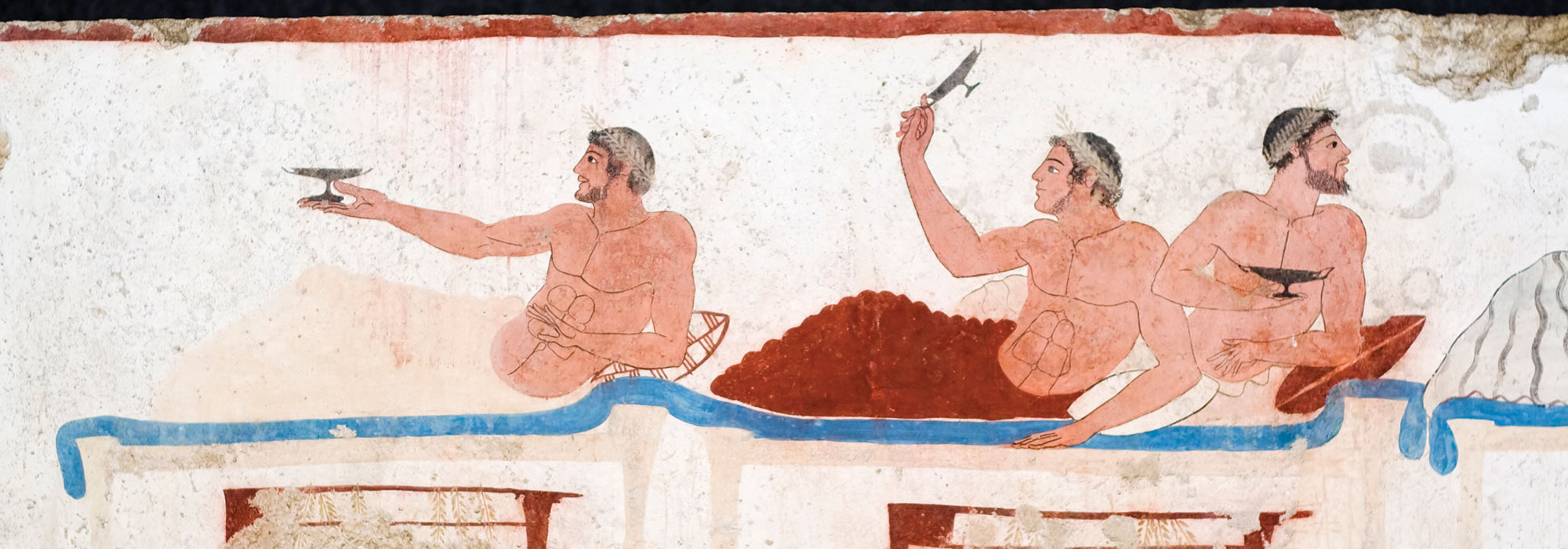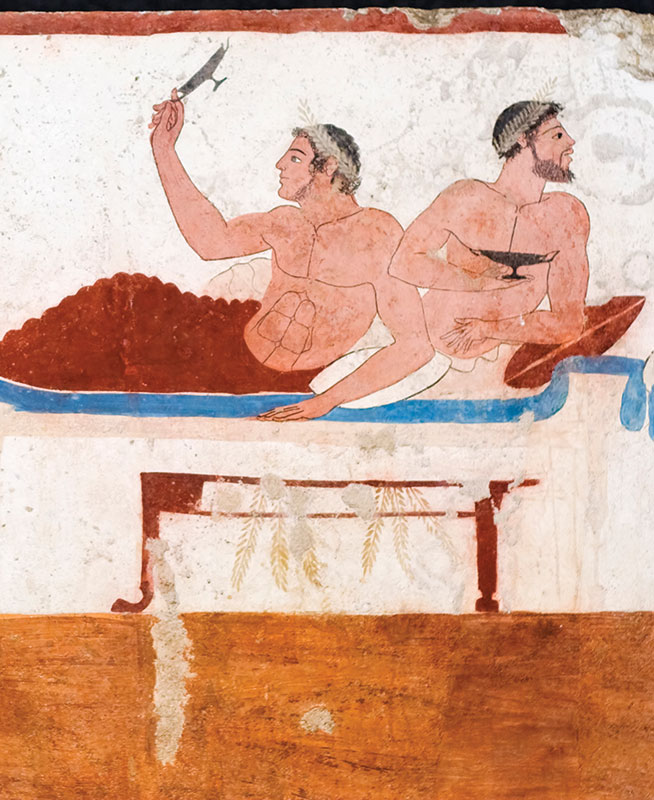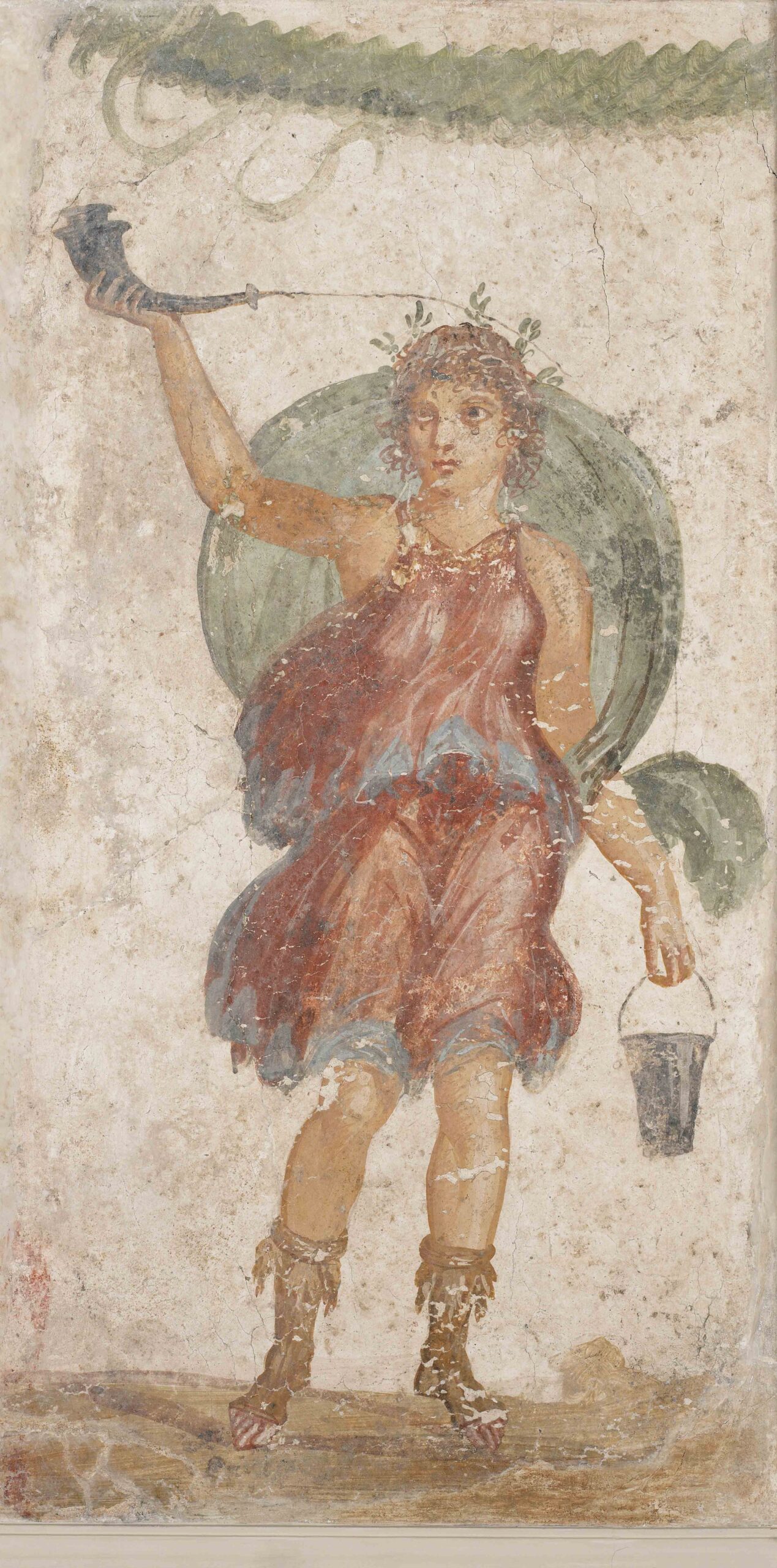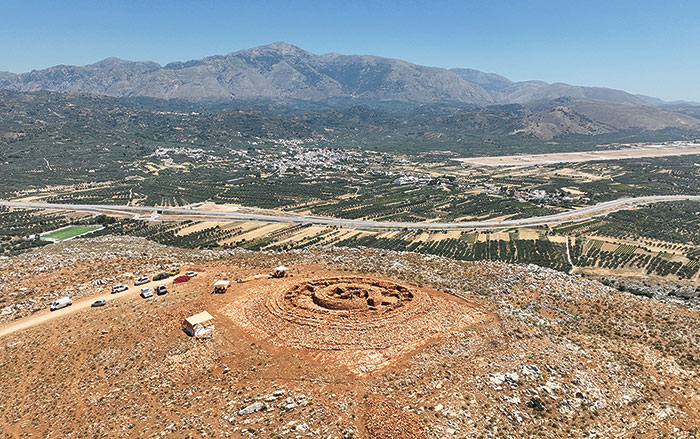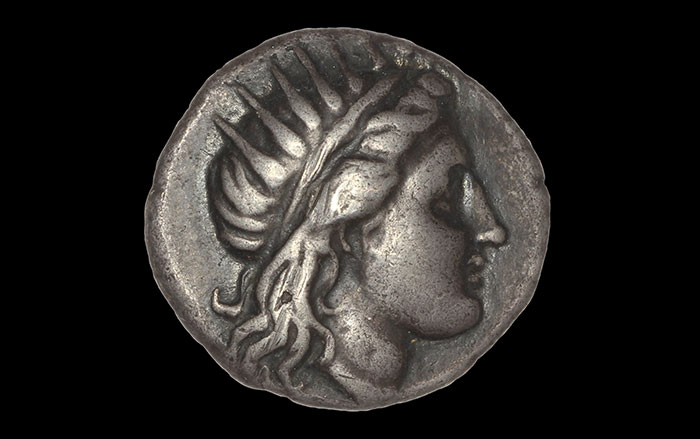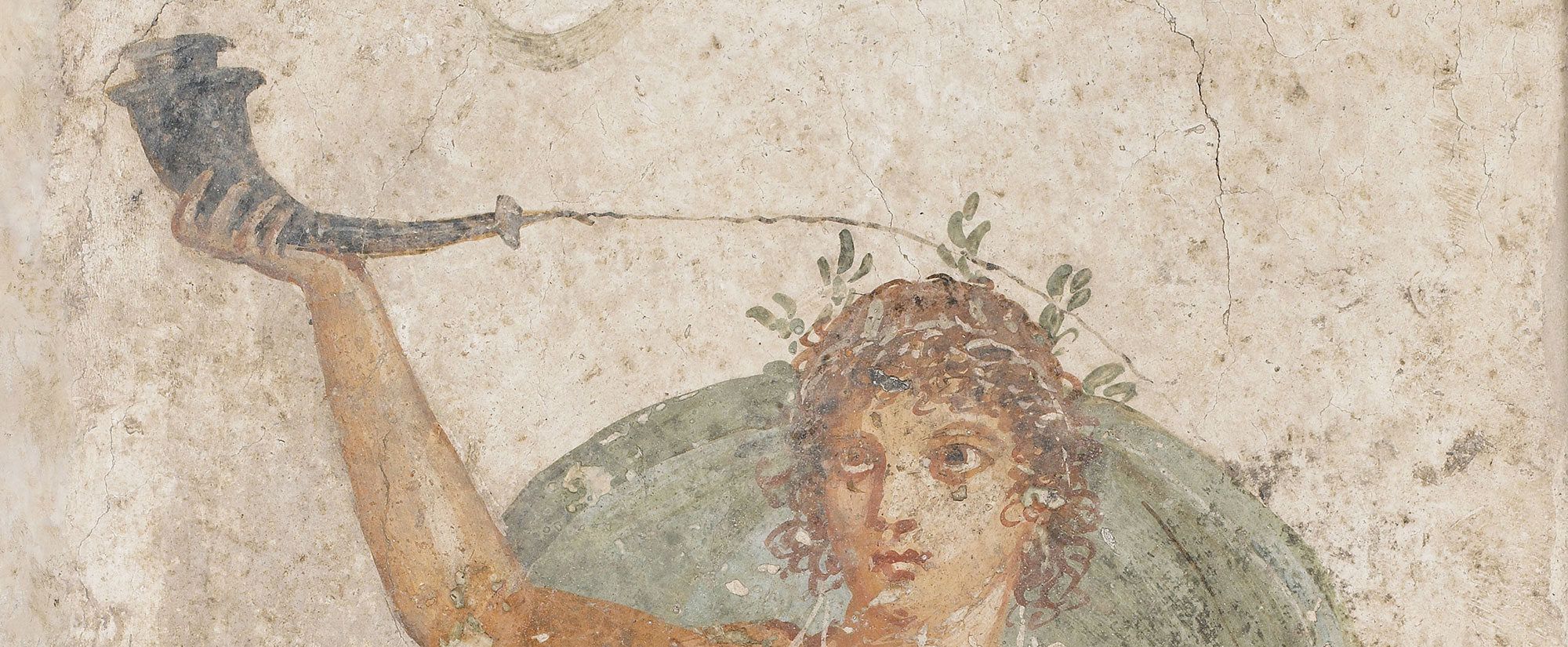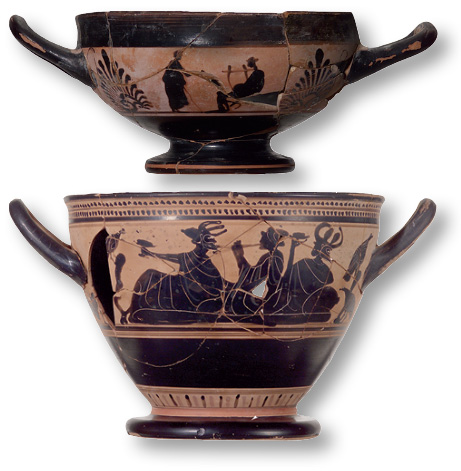
Ancient Greek vases frequently depict the revels of men participating in the symposium, an intimate drinking party held in a private home, as well as the consequences of excessive consumption that may have occurred during such gatherings. But just how much wine, mixed with water in a bowl called a krater, would a group have consumed in the course of a typical symposium in early fifth-century B.C. Athens? To answer this question, archaeologist Kathleen Lynch of the University of Cincinnati and independent scholar Richard Bidgood calculated the capacity of serving vessels and drinking cups, including kylikes and skyphoi, excavated from early fifth-century B.C. houses in the Athenian Agora, the city’s main marketplace. Assuming each kylix was filled to just over half an inch below its rim—a level at which reclining guests could swill, but not spill, their wine—they estimated that the average cup’s capacity was roughly equivalent to that of a can of soda. Thus, a single krater could hold a few rounds of drinks for a moderate-size group.
Even if the krater were refilled throughout the night, Lynch explains, this suggests that symposiasts wanted to prolong the evening’s festivities without going overboard. The researchers also discovered that kylikes from a given house held varying amounts, even if they appeared to all be around the same size. “The symposium’s emphasis on equality was underscored by everyone having the perception of the same amount of wine,” says Lynch. “Even if it was technically a bit different, they wanted to look around the room and see people with similar-size cups filled to a similar level, so that no one felt that somebody was getting too much.”
